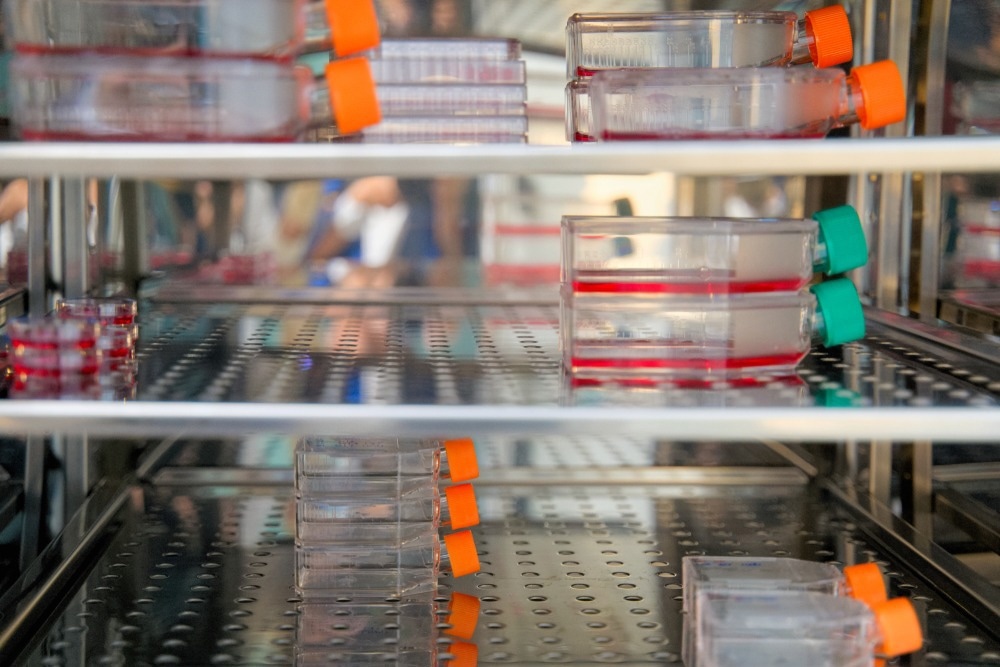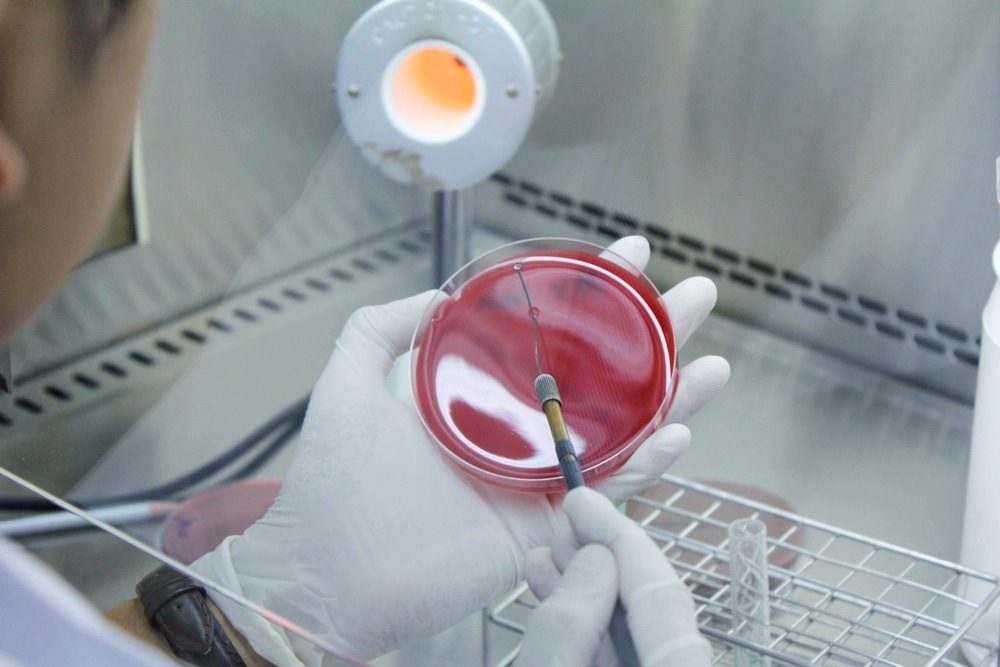Precise cultivation of cells is an essential requirement for biotechnological applications and biological research. Here, we explore the essential role of laboratory incubators in effective cell cultivation.

Image Credit: ArtPanupat/Shutterstock.com
Brief History of Laboratory Incubators
The first laboratory incubators originated in the late 1800s. Early forms of the device mainly worked to support microbial colonies. However, later in the 20th century, the requirements of scientific research started to change. Microbiology was becoming recognized as an important topic of study as medical research increased. This period saw a shift in the role and complexity of laboratory incubators.
Driven by these expanding scientific frontiers, incubators underwent a process of refinement. No longer just warming boxes, they started to cater to more intricate cell culture applications. The evolution of these devices was not just a technical improvement; it was a response to the evolving needs of medical research and the dynamic world of microbiology.
How Do Laboratory Incubators Support Scientific Research?
Laboratory incubators create regulated, contaminant-free conditions for cell culture's safe and effective growth.
The primary function of a laboratory incubator is to create an ideal environment for cell growth, such as maintaining a perfect balance of temperature, humidity, and CO2 levels to fulfill the specific requirements of various cell types.
Laboratory incubators provide important control for cell survival, flourishing, and multiplication. Without such regulated settings, the delicate process of cell growth and development could be easily interrupted, resulting in inaccurate research outcomes or failed experiments.
Additionally, the versatility of laboratory incubators expands their application range: in microbiology, they nurture minute but life-saving bacteria; in medical research, they provide insights into disease mechanisms; while in the pharmaceutical industry, they are critical for drug development, and in environmental studies, they assist in analyzing ecosystem processes.
Another critical role of laboratory incubators is contamination prevention. Even the slightest contamination by an unwanted element can have disastrous consequences for cell cultivation. Laboratory incubators help to prevent cross-contamination and maintain a sterile environment, ensuring only the intended cells grow in the cultures.
How Do Laboratory Incubators Work?
Laboratory incubators work by maintaining a steady environment suitable for cell development. The incubation phase is crucial in the process of cultivating organisms. To promote bacterial growth, culture plates are first placed inside an incubator that has been carefully calibrated to a specific temperature range, usually between 35°C and 37°C.
Before starting, inspecting the incubator for remnants from prior use is imperative to prevent cross-contamination. Should the incubation of multiple organisms be required under identical conditions, cohabitation within the incubator is acceptable.
Once the interior is ready, the incubator is sealed and activated to reach the stipulated temperature. At this stage, one may employ a thermometer to confirm the accuracy of the environmental conditions.
Concurrently, should the cultured organism necessitate a specific CO2 concentration or humidity level, these variables are adjusted to create an optimal growth milieu.
When all conditions are satisfied, the culture plates are positioned on the perforated shelves in an inverted fashion to mitigate the risk of condensate interference with colony isolation.
For extended incubation durations, sealing the plates with adhesive tapes or enclosing them in protective containers is recommended to ensure both sterility and moisture retention.
Upon completion of these preparatory steps, the incubator door is locked, and the cultures are left to develop for the designated period. This careful orchestration of the incubation environment is essential for the integrity of the cultures and the subsequent analytical processes.

Image Credit: TheBlueHydrangea/Shutterstock.com
Prominent Examples of Laboratory Incubators
Laboratory incubators are essential tools tailored to meet the specific needs of academic research and industry. Notably, several commercial examples from prominent suppliers stand out for their specialized features and reliability.
Thermo Fisher Scientific is a prominent name in cell culture laboratories, especially known for its Heracell VIOS CO2 Incubator. This incubator is a staple for meticulously regulating CO2 levels, creating the perfect environment for mammalian cell cultures. It is an indispensable tool for studies that require simulation of natural conditions within the human body. The Heracell VIOS is celebrated for its precision and stability, ensuring cell cultures are maintained in optimal conditions.
The Eppendorf New Brunswick™ Galaxy® Refrigerated Incubators are a go-to choice for temperature-sensitive cultures. These incubators excel in their ability to cool down below room temperature, providing a broad range of temperature control. This capability is crucial for cultivating delicate cultures requiring specific and often cooler environmental conditions.
The Innova® Shaking Incubators from Eppendorf bring a dynamic element to cell cultivation. Equipped with a robust shaking mechanism, these incubators are particularly beneficial in fields like microbiology and biochemistry, where continuous movement is essential for the growth and thorough mixing of cultures. The Innova® line is known for its adaptability and durability, accommodating various shaking needs and flask sizes, making them versatile and invaluable in various research settings.
For research in fields like cancer, where understanding the behavior of cells in low-oxygen environments is critical, the Binder CB 170 CO2 Incubator with O2 Control stands out. This incubator is specifically designed to create hypoxic conditions, simulating the low-oxygen environments found in many tumours.
Binder's incubators are recognized for their precise control and consistency in oxygen level regulation, making them essential for cancer research and other studies involving hypoxic conditions.
These examples illustrate the diversity and specialization in laboratory incubators. Each brand's unique features and reliability cater to the specific demands of various scientific fields.
Conclusion
Laboratory incubators are essential tools across the life sciences. Their capacity to recreate precise environmental conditions has helped us comprehend cellular processes and paved the path for advances in medicine, environmental science, and biotechnology.
Sources:
Lab Manager (2010). Evolution of the Laboratory Incubator. Available at: https://www.labmanager.com/evolution-of-the-laboratory-incubator-19103
Improvements in CO2 Incubators for Cell Cultures. www.biocompare.com.
Zarkani, M. K. (2020). Design and implementation of Laboratory incubator.
Hartmann, I. K. & Wagener, J. (2020) CO2 Incubators – Best Practices for Selection, Set-up and Care. Available at: www.eppendorf.com/.../...tors_Best-Practices-Selection_Set-up-Care.pdf
O'Driscoll, A. (2019) How to Use and Maintain Your Lab Incubator. Available at: labincubators.net/.../how-to-use-and-maintain-your-lab-incubator
Matthiesen, S., et al. (2021). A Straightforward Hypoxic Cell Culture Method Suitable for Standard Incubators. Methods and Protocols, 4(2), p.25. doi.org/10.3390/mps4020025.
Wight, J., et al. (2020). Microbiology in the Field: Construction and Validation of a Portable Incubator for Real-Time Quantification of Coliforms and Other Bacteria. Frontiers in Public Health, [online] 8. doi.org/10.3389/fpubh.2020.607997.
Microbe Online (2023). Laboratory Incubator: Principle, Parts, Types, and Uses. Available at: microbeonline.com/laboratory-incubator-principle-parts-types-and-uses/
Thermo Fisher Scientific Inc. CO₂ Incubators. Available at: www.thermofisher.com/.../co2-incubators.html
Thermo Fisher Scientific Inc. Thermo Scientific™. Available at: https://www.thermofisher.com/order/catalog/product/51033557
Eppendorf SE. Centrifuge 5910 Ri - Refrigerated Centrifuge. Available at: www.eppendorf.com/.../Centrifuge-5910Ri-p-PF-963296
Eppendorf SE. Innova® S44i - Stackable Incubator Shaker. Available at: www.eppendorf.com/.../InnovaS44i-p-PF-169613.
Higdon, H. L., et al. (2008). Incubator management in an assisted reproductive technology laboratory. Fertility and Sterility, 89(3). doi.org/10.1016/j.fertnstert.2007.03.040.
BINDER GmbH. Incubators with hot air sterilization and humidity regulation. Available at: www.binder-world.com/.../cbf-170
Further Reading
Last Updated: Feb 15, 2024